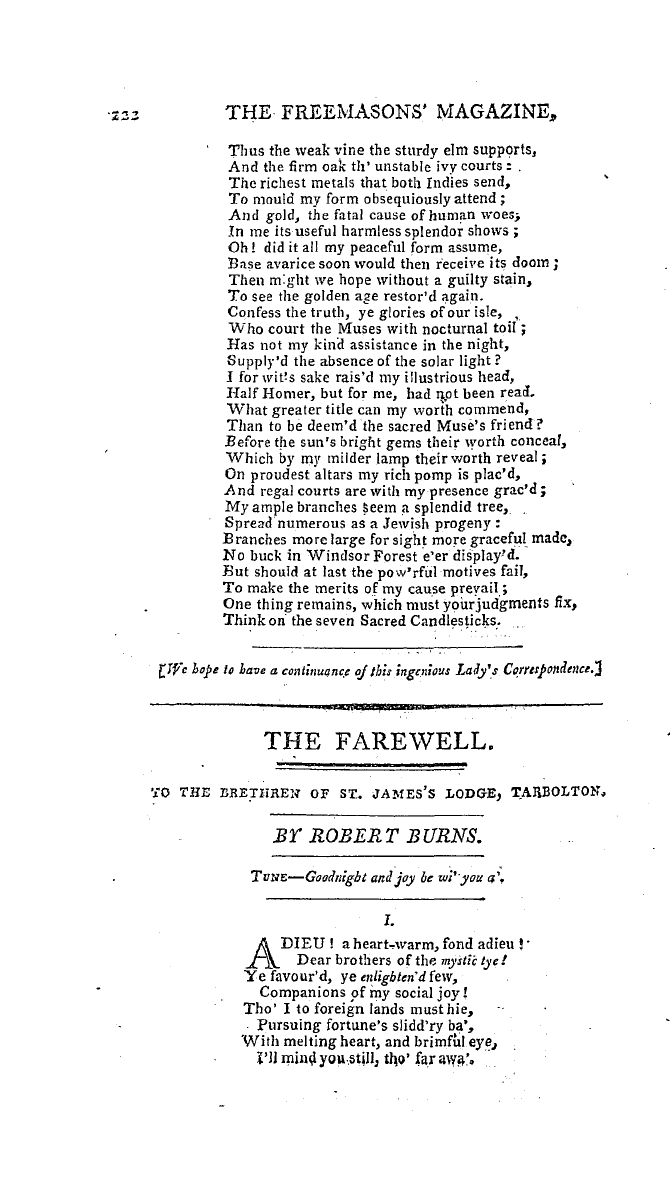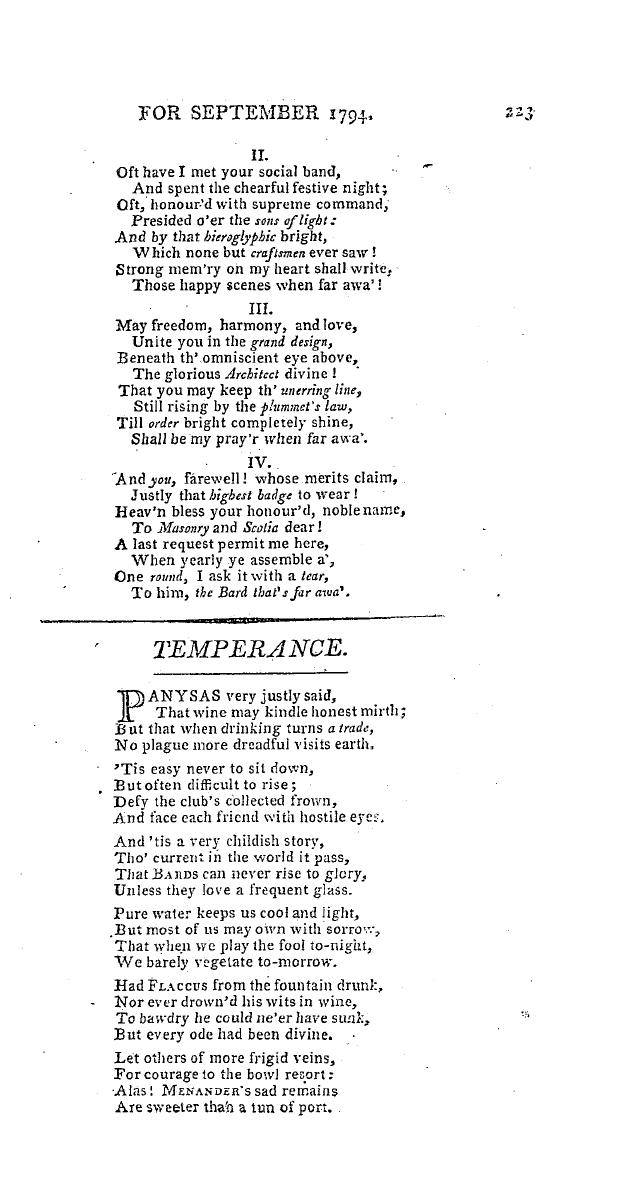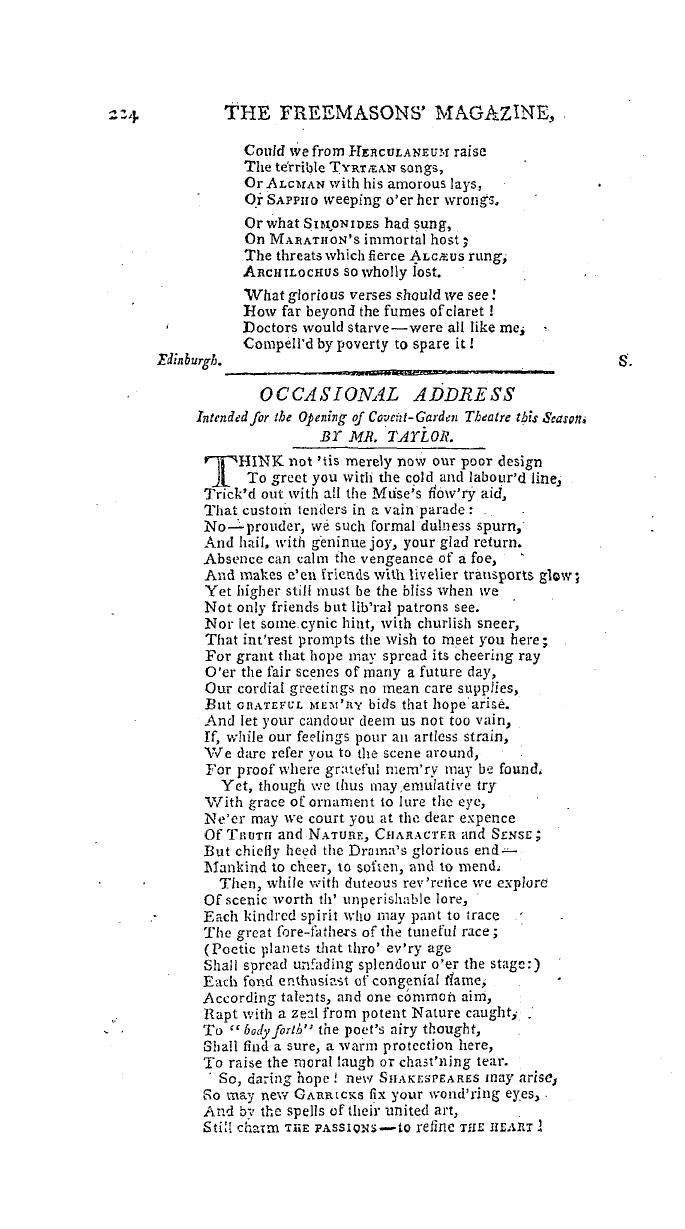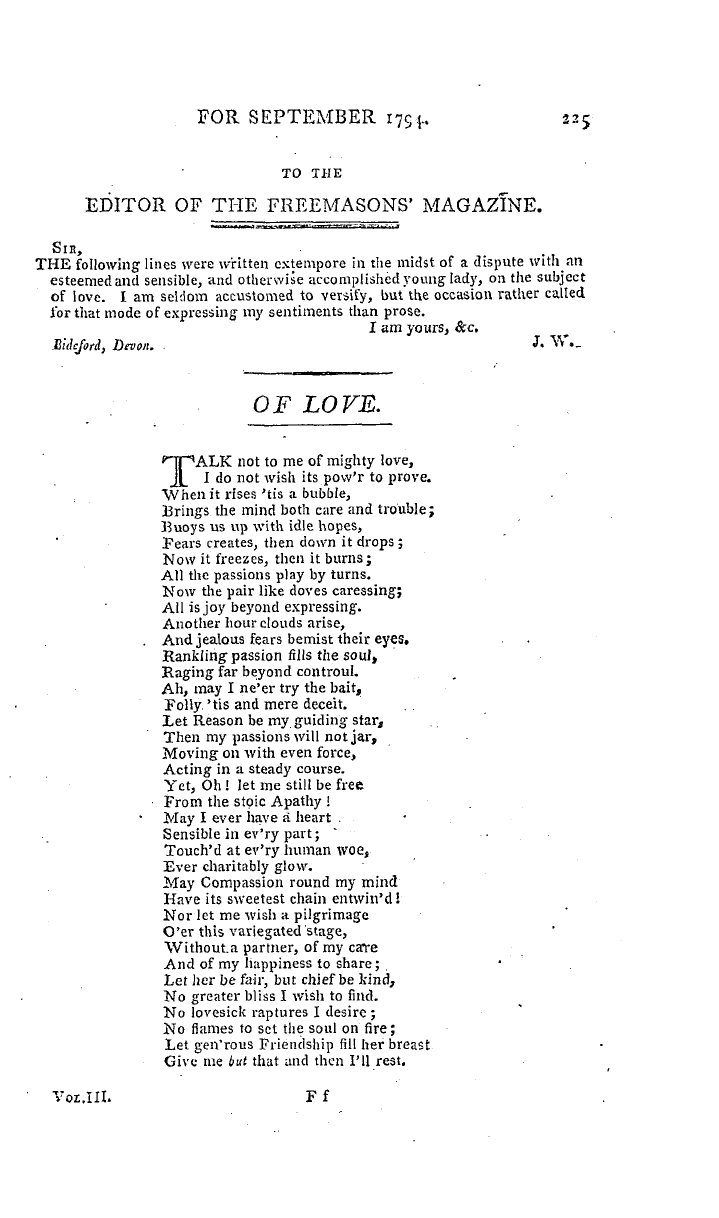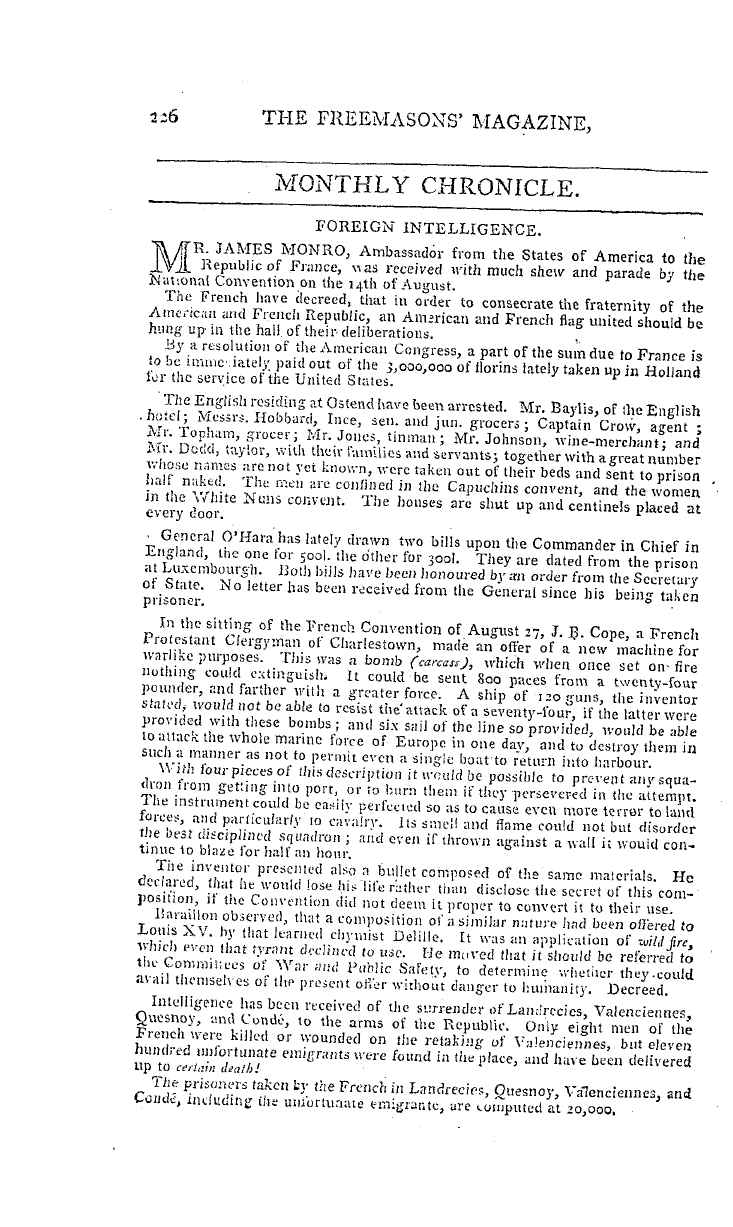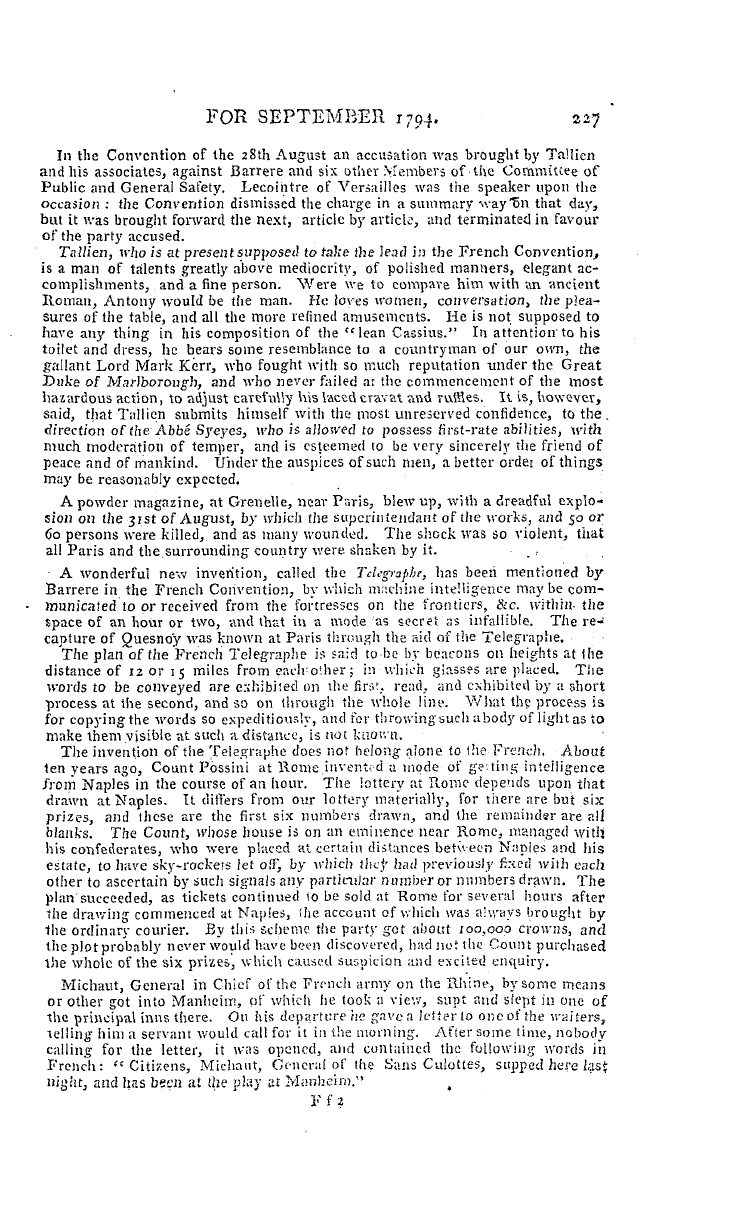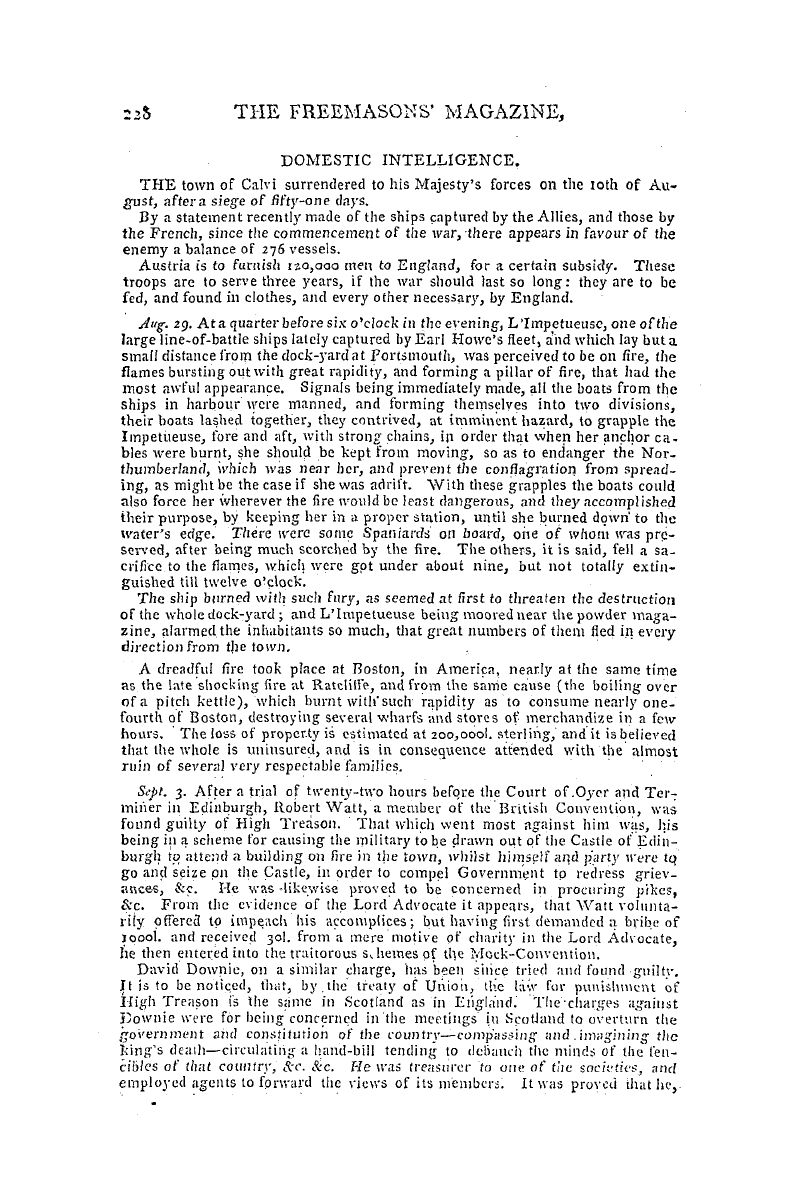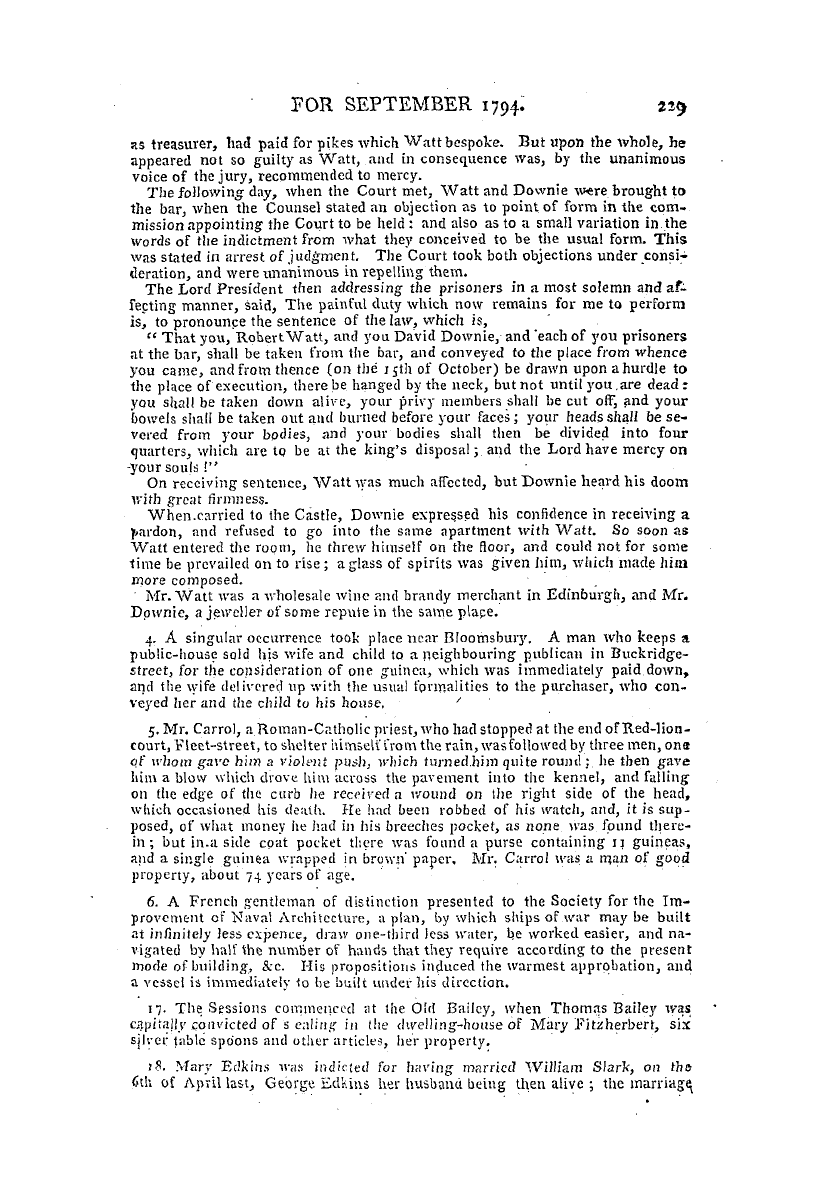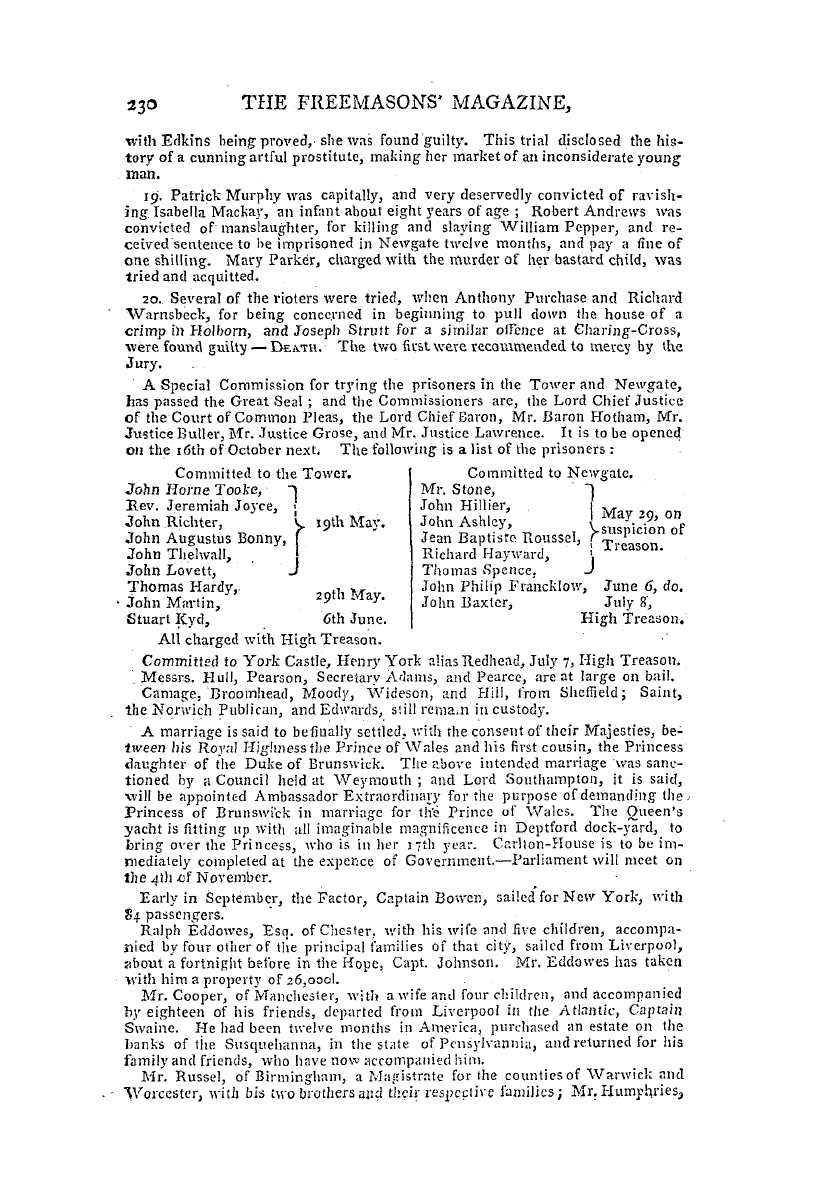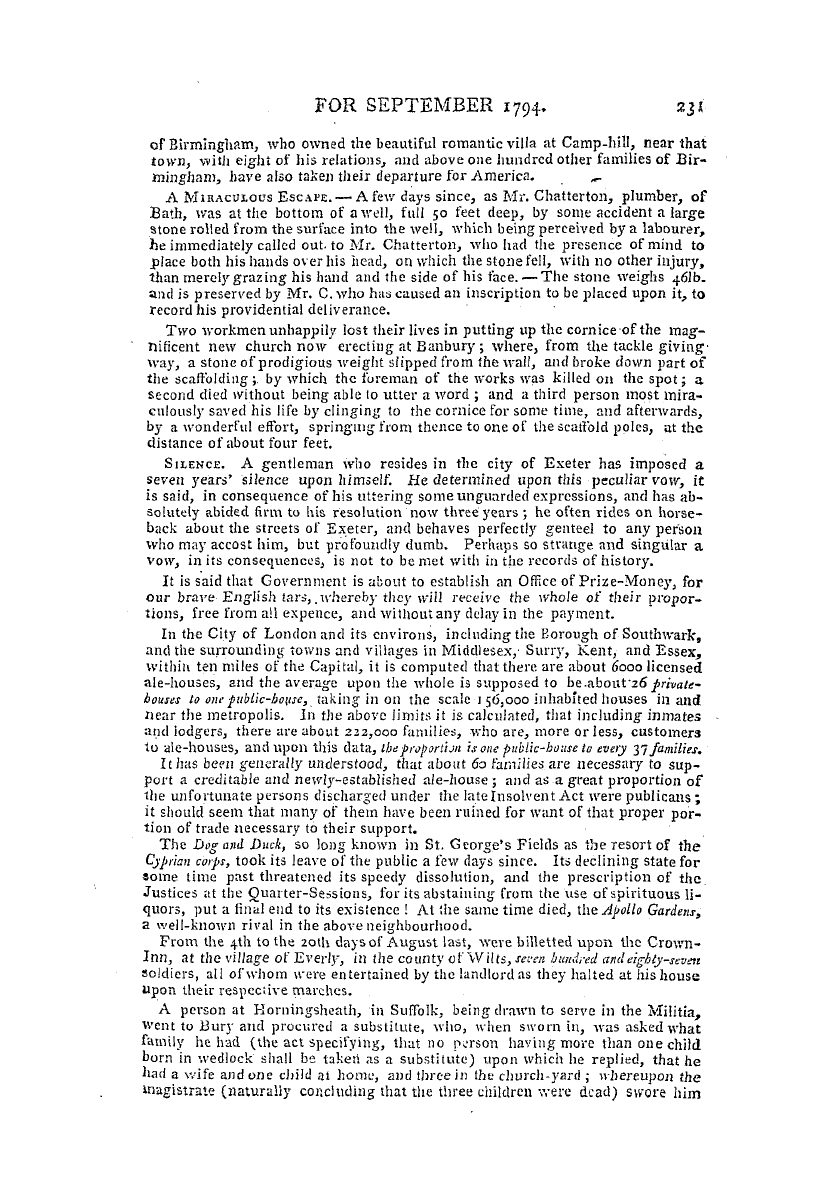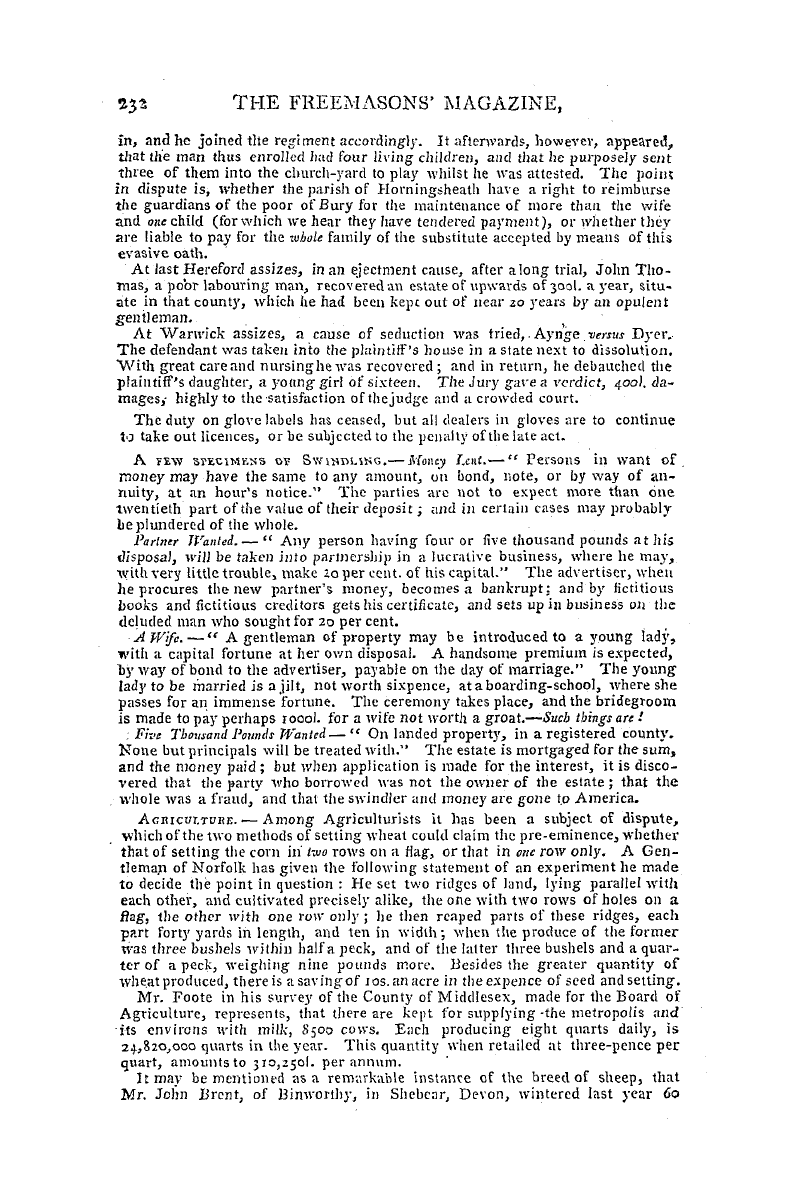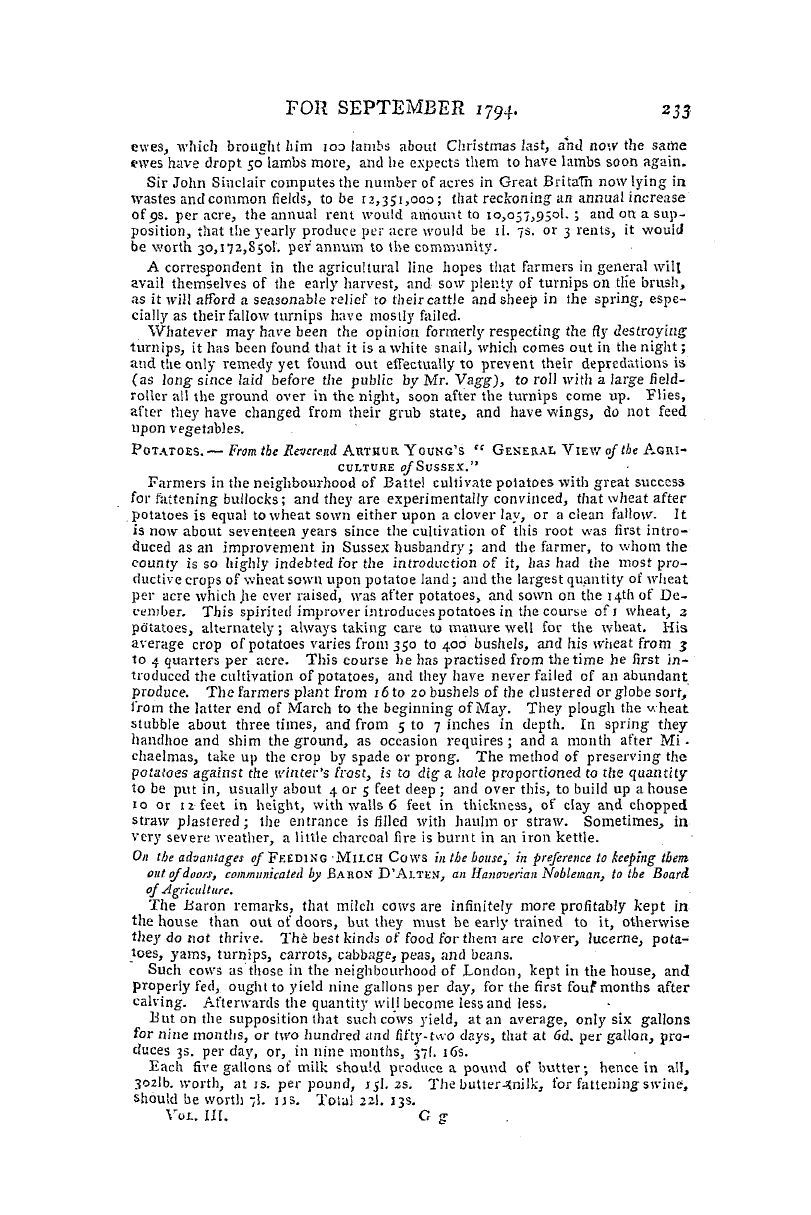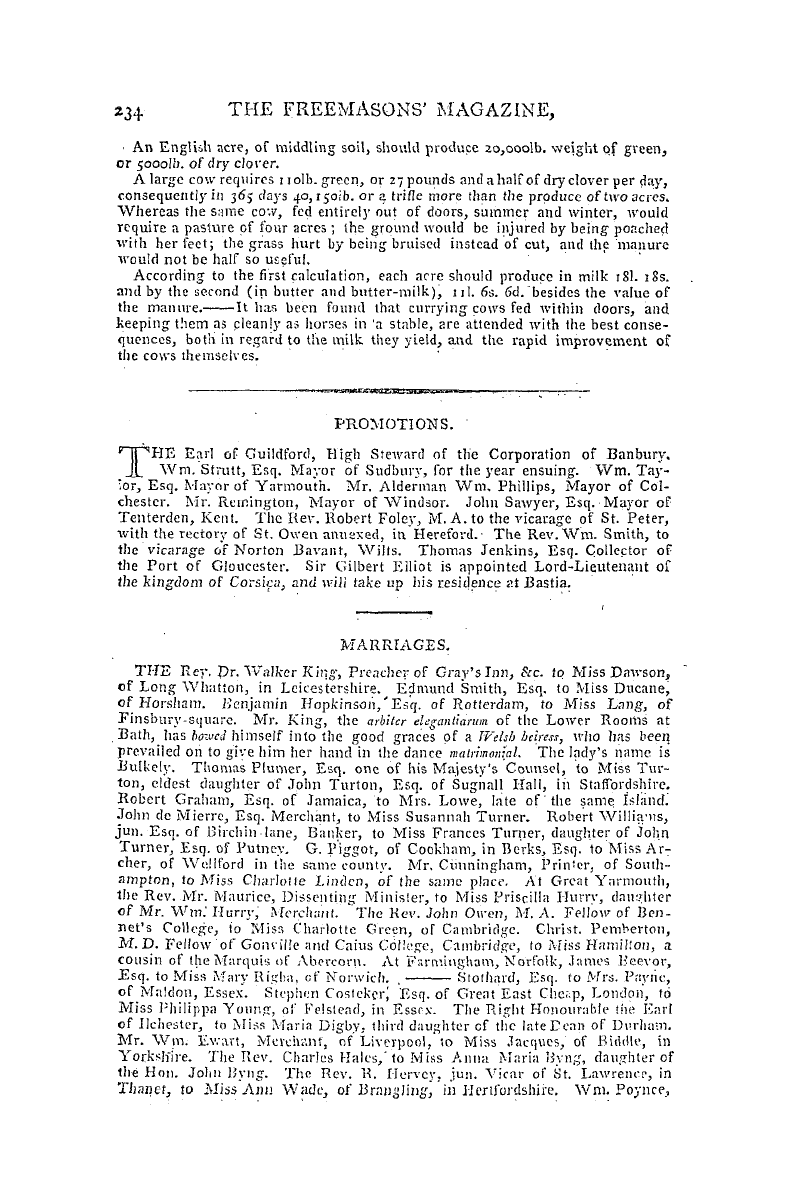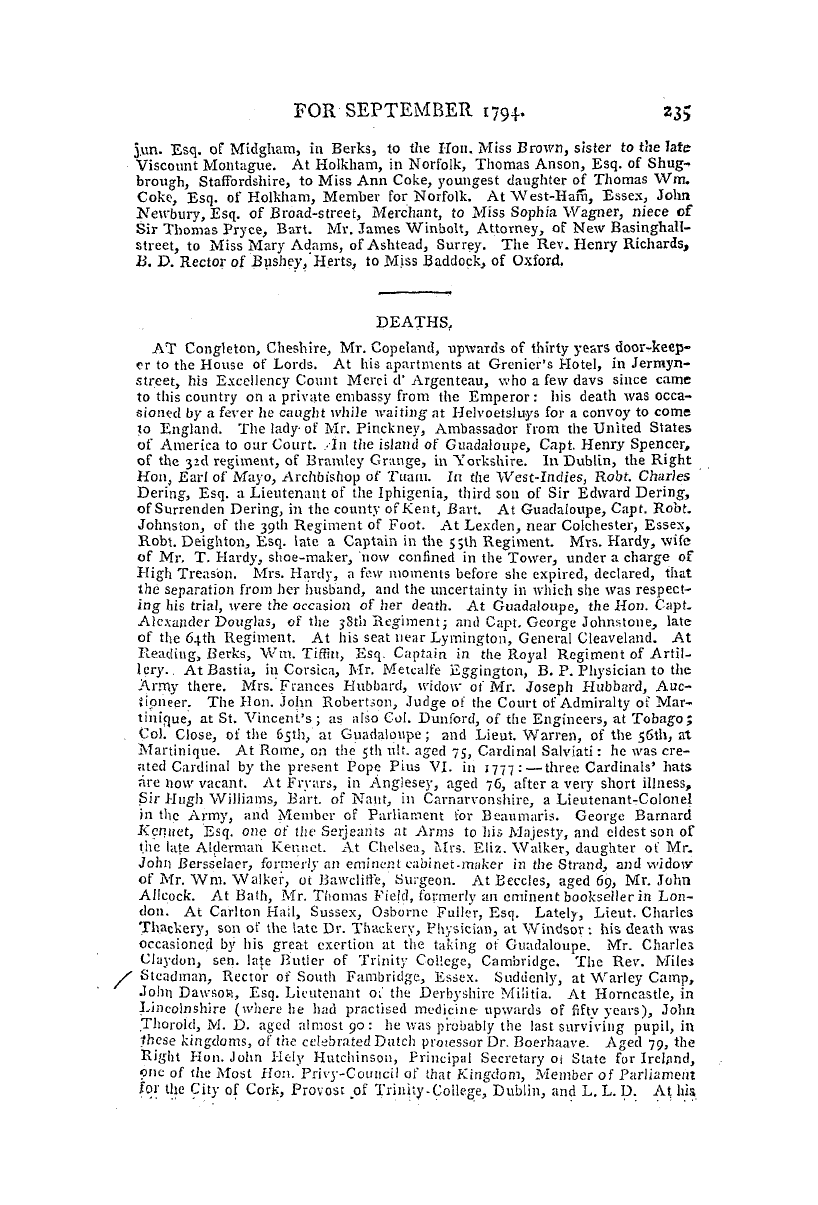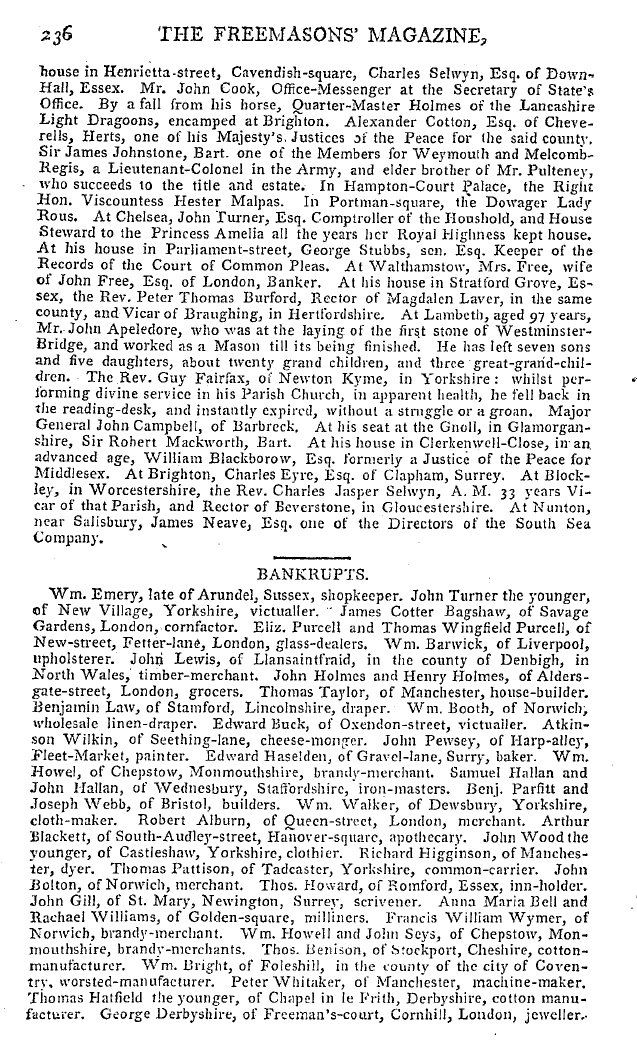Note: This text has been automatically extracted via Optical Character Recognition (OCR) software.
A Short Sketch Of The History Of Freemasonry
A SHORT SKETCH OF THE HISTORY OF FREEMASONRY
IN SCOTLAND . [ Transmitted by Mr . JAMES SOMERVILLE , of Edinburgh . '}
THE ancient part , of the history of Scotland is mostly taken up with relations of the many different civil wars in which they were continually engaged . The Picts , we learn , were a . mechanical and mercantile people , and founded many cities , and built several strong castles in their dominions ; while the Scotch affected rather to be soldiers , and wholly given to the trade of war . In those days of
ignorance and barbarism , we cannot expect to trace even the faintest dawmngs of arts and sciences . The principle of self-defence was the greatest object of their study , which soon obliged them to have recourse to architecture , and to build houses and castles for their mutual preservation , and to repel the riotous insults of their lawless neighbours . —We can , however , still boast of many noble remains
of the ancient Roman buildings , which plainly evince , that the Romans , when they entered this country , brought along with themsome of their best designers and operative masons , whom they employed in rearing those noble fabrics of which we can so plainly at this day trace the remains . Nor is it to be doubted but they communicated to the natives and left behind them such a taste and knowledge for Masonry , as has descended from them to the present generation .
From this period , then , we may date the knowledge of Masonry , and first introduction of the arts and ' sciences into Scotland : but " to deduce its gradual progress from that time , would require a complete recapitulation of the History of Scotland ; nor is it easy at this distance of time , in a country so very deficient in the point of history , and who were ever engaged in civil wars , to point put all the differentpatrons of Masonryor who were the principal designers of those
, many ancient buildings we see in almost every corner of the country . Certain it is , Masonry has been much cultivated and highly patronised all along by the great and noble of this country ; hence those magnificent structures , hence those noble antique buildings , those remains of Gothic architecture , in almost every town in Scotland . The Fraternity of Freemasons in Scotland always owned their
king and sovereign as their Grand Master ; to his ' authority they sub ^ mitted all disputes that happened amongst the Brethren . When not a Mason himselfj he appointed one of the Brethren to preside as his deputy at all their meetings , and to regulate all matters concerning the Craft . Accordingly we find James I . that patron of learning-, cotnitenaiicing ; the Lodges with his presence , ' as the royal Grand Y 2 -
Note: This text has been automatically extracted via Optical Character Recognition (OCR) software.
A Short Sketch Of The History Of Freemasonry
A SHORT SKETCH OF THE HISTORY OF FREEMASONRY
IN SCOTLAND . [ Transmitted by Mr . JAMES SOMERVILLE , of Edinburgh . '}
THE ancient part , of the history of Scotland is mostly taken up with relations of the many different civil wars in which they were continually engaged . The Picts , we learn , were a . mechanical and mercantile people , and founded many cities , and built several strong castles in their dominions ; while the Scotch affected rather to be soldiers , and wholly given to the trade of war . In those days of
ignorance and barbarism , we cannot expect to trace even the faintest dawmngs of arts and sciences . The principle of self-defence was the greatest object of their study , which soon obliged them to have recourse to architecture , and to build houses and castles for their mutual preservation , and to repel the riotous insults of their lawless neighbours . —We can , however , still boast of many noble remains
of the ancient Roman buildings , which plainly evince , that the Romans , when they entered this country , brought along with themsome of their best designers and operative masons , whom they employed in rearing those noble fabrics of which we can so plainly at this day trace the remains . Nor is it to be doubted but they communicated to the natives and left behind them such a taste and knowledge for Masonry , as has descended from them to the present generation .
From this period , then , we may date the knowledge of Masonry , and first introduction of the arts and ' sciences into Scotland : but " to deduce its gradual progress from that time , would require a complete recapitulation of the History of Scotland ; nor is it easy at this distance of time , in a country so very deficient in the point of history , and who were ever engaged in civil wars , to point put all the differentpatrons of Masonryor who were the principal designers of those
, many ancient buildings we see in almost every corner of the country . Certain it is , Masonry has been much cultivated and highly patronised all along by the great and noble of this country ; hence those magnificent structures , hence those noble antique buildings , those remains of Gothic architecture , in almost every town in Scotland . The Fraternity of Freemasons in Scotland always owned their
king and sovereign as their Grand Master ; to his ' authority they sub ^ mitted all disputes that happened amongst the Brethren . When not a Mason himselfj he appointed one of the Brethren to preside as his deputy at all their meetings , and to regulate all matters concerning the Craft . Accordingly we find James I . that patron of learning-, cotnitenaiicing ; the Lodges with his presence , ' as the royal Grand Y 2 -































































